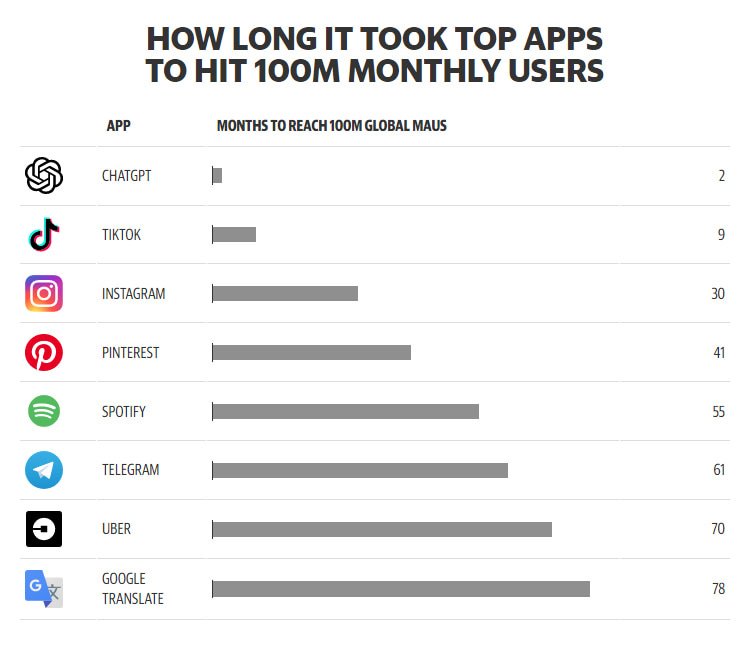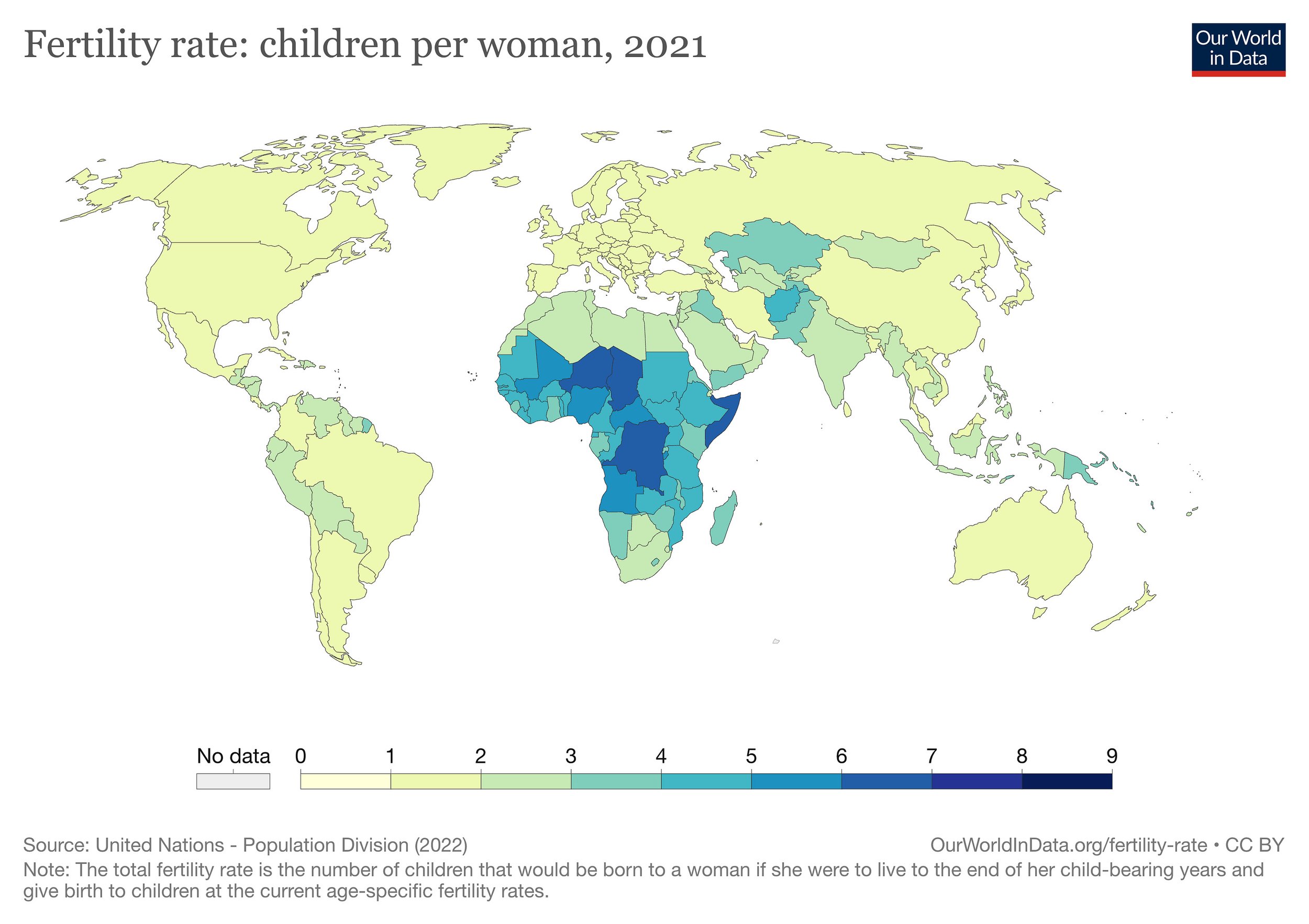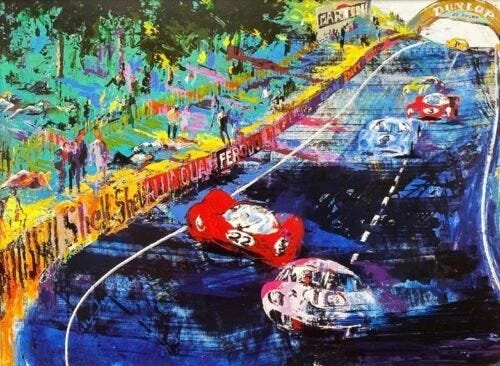Architect. Sculpt. Hone.
Photography by Christian Fletcher
These days waves of change, seas of surprises and tectonic tsunamis are transforming our landscapes on an almost weekly basis.
Rapidly accelerating AI.
Bank failures.
Tech and other layoffs.
China Cards. Russian Wars. Indian Nationalism.
And the list goes on.
Doom scrolling. Hyper ventilating. Dramatic emotions. Screeching headlines.
All of these are understandable human reactions as we grope to find a place to stand in rapidly shifting sands.
But nothing gets better at the end of the venting of feelings though we may feel better as we rail against a world out of control.
Rather let us embrace, respect and focus our feelings to align with the forces of change
It is a time to use the fuel of feelings to architect, to sculpt, and to hone ourselves so we can continue to thrive in the future.
It’s more up to ourselves than we think.
Photography by Christian Fletcher
Architect.
“The way we spend our time defines who we are.” Jonathan Estrin
One way to gain control is to architect one’s week in ways that time and its vagaries do not toss us around.
Consider setting aside an hour a day or seven hours a week to feed each of one’s physical, mental, emotional systems.
Physical operating system: A long walk or exercise.
Mental operating system: Learn or read or watch or do.
Emotional operating system: Connecting with friends and family. Helping others.
Architecting one’s day to feed each of the operating systems is independent of income, employment status, or country in that they do not cost much if anything.
And no day where one has learned something, connected with somebody, and helped the body can be deemed a wasted day.
3 hours a day, 21 hours a week sets the foundation for the other 147 hours in mood, tempo, and control.
Build tomorrow by architecting today.
Photography by Christian Fletcher
Sculpt.
“Every block of stone has a statue inside it, and it is the sculptor’s job to release it” Michelangelo.
Every individual has one or more talents, and it is our job to find, feed and sculpt these talents.
Today we are increasingly in a world of builders, makers, creators, inventors and in sculpting something special out of raw materials is a way to find flow and make and leave one’s mark.
It may be writing or photography or video or writing code, cooking a meal, investing in a relationship, building a company or many other things but transforming and building is both an anti-dote and a homage to a transforming world.
We transform and are not just transformed.
Build things. Make stuff. Create something .Unleash potential.
We can release the statue within us or help others find the statue within them.
Photography by Christian Fletcher
Hone.
“To hone my voice, I read everything, from books to cereal boxes, three times: once for fun, the second time to learn something new about the writing craft, and the third time was to improve that piece.” Amanda Gorman
In a world of change we must hone ourselves to align with change since change does not care to adjust to us.
Honing through iteration, upskilling, re-inventing, and many other ways of enhancing excellence of craft.
For many of us in the coming years it will be how to incorporate, build on, extend, and leverage AI as a tool, enabler, extender, and idea generator for our work.
How to find new ways to communicate and connect as Augmented Reality and Virtual Reality enable new canvasses.
Machines will replace people who do not hone their craft to incorporate machines but will not replace talent who hone skills to incorporate and complement machines.
We cannot control or impact what a world leader may do, what shocks may come or what others may have planned but we can twist ourselves and our skills into new shapes to make sure that we bend with the arc of the future and are not broken.
The future may not fit in the containers of the past.
But by architecting, sculpting and honing we will thrive in the container called the future.
Scale. Speed. Skill
Successful companies are adept at combining the power of scale, the leverage of skill and the swiftness of speed to win.
Technology companies like Apple and Samsung aided by their partners at places like Foxconn and TMCC continuously improve, iterate, and ship.
Many food and packaged goods behemoths are filled with highly skilled people who innovate and produce at huge scale and have significant clout with distribution and advertising channels.
This week we saw Jamie Dimon of JP Morgan Chase leverage his experience from the 2008 crash and his knowledge of the system with the scale of his bank and other leading banks to attempt to stabilize First Republic bank. These were huge organizations whose CEO’s moved rapidly proving that elephants can dance fast and quick if they need to under skilled leadership.
The challenge for successful organizations moving forward is not they do not have scale, skill, or speed but rather what happens as a new world emerges where the benefits of scale diminish, when new skills become critical but the ability to hire the newly skilled with the old incentives are reduced, and the speed of the world outstrips the speed of the organization.
Scale
In the past three years in the US all the net new jobs have been created by companies with fewer than 250 employees.
Modern technology including GPT4, influencer and social media and the explosion of marketplaces from AWS to Shopify to Upwork to manufacturing and fabrication on demand by scaled foundries allow individuals and small companies to scale quickly with very limited resources.
These new platforms, technologies and marketplaces are significantly reducing the benefits of some types of scale and many types of expertise.
Today the scale of manufacturing, communication spending, resources and people are being augmented by a new scale of network, data, influence, and talent/ideas.
The Mr Beast’s, D’Amelio sisters and Kardashian sisters leverage the new eco-system to scale their talent without having to become big as companies.
A new form of media company built around world class talent whose bylines are featured as prominently as their publications logo combined with simple and low cost/no cost distribution such as email has made Axios, Puck and now Semafor influential and impactful with dozens versus hundreds or thousands of employees.
Scale! is a short piece on how scale is changing and what leaders and companies can do to scale their companies but themselves.
Not only can individuals now work at the scale of companies by upskilling, unleashing their talent, scaling through their teams, and building reputations as stellar as big firms but large companies now need to re-configure around talent rather than believing talent will cluster around companies.
The shift of power from big to small, management to talent, and from the towers of power to the talent with wrenches in the trenches has only just begun.
Skill
Every advance in technology places a premium on skilled ability.
Chat GPT, Runway ML, DALL·E 2, are modern paints and new canvases but in the hands of skilled painter (who has learned the new brush strokes necessary to unleash the potential of these tools) they can be far more magical than that of a lesser talent.
Ironically some of the skills in highest demand such as coding may become less scarce as the machine writes code, while the “softer” skills of creativity, curiosity, imagination, story telling and innovation which now will easily have all the facts, figures and charts at their disposal can connect dots in new ways by standing on the shoulders of machines to create new worlds and ways to wealth.
The demo of Microsoft’s Co-pilot which gives a glimpse of how AI will be weaved into the fabric of everything enabling individuals to have superpowers.
In today’s fast-moving environment, the half-life of skills decays much more quickly and unless one is continuously learning, enhancing capabilities, and upgrading talent a firm can suddenly find itself with herds of people skilled in yesterday’s tongue when the world is speaking a new language.
Today with 62% of Gen-Z having a side-hustle, free-lancers about to overtake full time workers and unbundled and distributed work offering a plethora of possibilities, large companies must re-invent themselves in every way to attract and retain talent.
Human resources, people development and talent leaders will become even more strategic to the fabric of the future company. Sadly, in the most recent round of layoffs many companies blew up their talent teams since they no longer were in “recruiting” mode.
Talent will matter more builds the case as to why talent will grow more and not less important in an AI and modern world of technology as we incorporate technology and re-design organizations around the best of people and machines.
Speed
It took nearly two weeks for Washington Mutual to fail.
It took less than two days for SVB to fail.
It took Instagram 2.5 years to reach 100 million users.
It took Tik Tok 9 months to do the same.
It took ChatGPT 2 months.
Moore’s law saw processing power double every 18 months. In the world of machine learning and large language models the rate of doubling or even tripling is less than six months.
Fueled by software, social media, and a twitchy and connected world everything is accelerating at a speed which is leaving most organizations feel tortoise like.
In a world of espresso too many companies are going through the rituals and machinations of high tea.
We should all evaluate how much of our time do we spend working on output and how much time in meetings, check-ins, sign-offs, all-hands, temperature checks and other group gropes where we gather like herds around PowerPoint slides.
Quality control, risk management and inclusive viewpoints require a process that for good reasons slow down production or delivery while enhancing the eventual output and are essential.
But too many companies may still be following processes for another age with too many people and too many check-ins. A study by Bain indicated that any project moves forward in an organization less than 5 percent of the time and is waiting for the next sign off or is on hold the rest of the time.
When the benefits of scale are reduced the lack of speed now becomes a bug rather than a feature of a large company.
Feedback, Re-Thinking Presentations, and Fewer reveal how large companies can move faster by actually providing feedback versus check-ins, curtailing long dog and pony presentations that wind their way through time and limiting the number of people involved in a project.
Implications.
Every leader, every company and every individual must determine how best to hone skill, create new scale and determine where and what to speed up. Some approaches to consider:
New Strategies: Many moats like scale will soon become prison walls unless companies learn to break free from their containers and mindsets of the past. Think different. Do different.
Outside perspectives critical: Management and Boards need to look outside and below versus at people like themselves or upward. By the time stuff gets to Davos it’s too late and often the opposite of what is actually going on. The future does not only come from the heavens and a cabal of insiders but from the slime and outsiders.
Scale is not bad but needs to be leveraged differently: Being scaled does not mean one cannot move at speed and build new skill sets. Just look at Microsoft over the past five years. Or how the New York Times has re-invented itself for a new world.
Openness is the key: A mindset open to partnering which allows for speed and agility in incorporating new skill sets is important. An outlook open to other points of view when the future can come from anywhere and most importantly open to continuous learning in a world of change.
Focus and Flow
Photography by Rishad Tobaccowala
Bryan Wiener is one of the early digital pioneers who has created over half a billion dollars of shareholder value across the many companies he has either co-founded or helped grow and sell. He is best known for his leadership of 360i which he sold to Dentsu and his turnaround of Profitero which he sold to Publicis Groupe and which he continues to lead.
In the latest episode of the What Next? podcast titled “I am not Nostradamus” Bryan shares many learning and beliefs including:
a) how large companies can innovate by becoming fast followers.
b) how digital commerce will leak into everything and in doing so re-sculpt marketing and organizational design.
c) how future organizations will be built with product at the core and service at the edge.
During our conversation a theme emerged on how successful individuals and organizations combine focus and flow.
Photography by Rishad Tobaccowala
Focus One: Right time/Right market.
Successful individuals and companies pick their spots and time to market.
Surprisingly the companies that succeed the most are not pioneers but fast followers.
They identify where consumer/customer behavior is outstripping current market supply or where existing business models are falling short and then they focus on improving upon the early pioneers.
Facebook, Google Maps, and the iPod were all fast followers to My Space, MapQuest, and Rio Player.
Moving too early requires years of investment in trying to find a product/market fit and moving too late means a crowded marketplace where margins are low, and differentiation is hard.
Large companies need to a) be ready to follow fast through acquisition and/or b) ensure they have focused teams that identify the small but about to become big marketplaces which the larger company may not be paying attention to.
Centralized innovation that does not utilize small teams focused on unaddressed markets, which are not sufficiently outward looking or too driven by the metrics of the big company is why too many companies burn through tens of millions without anything to show for the investment but power points and innovation offsites.
Photography by Rishad Tobaccowala
Focus Two: Outcome vs Activity and People versus Process.
We often confuse activity with outcome.
So much time spent on the sounds and processes of the colon versus the cool shit that is created.
We often forget its talent and people that drive success versus structures and processes.
A few great players aligned as a team but otherwise unleashed will overwhelm armies of mediocre people chanting some corporate song written in yesterday’s script.
Photography by Rishad Tobaccowala
Flow One: Commerce is flowing into every corner.
Twenty-seven years ago, Time-Warner launched the Full-Service Network in Orlando Florida which would combine television and on-line buying, broadcast, and commerce.
It went nowhere but did eventually lead to the disastrous AOL Time-Warner merger.
Today online companies like TikTok and Firework, Cooler Screens. emerging connected TV models and Walmart Connect, Amazon and Roundel are making this reality not just connecting video and commerce but re-thinking what next generation commerce can be.
It is greater than just e-commerce and is not on the side but encrusted everywhere.
We are moving into a world where a grocery store is a media company, a connected automobile is a huge part of commerce and Marriott is not just a hotel chain but a network to find, build relationships and sell to travelers.
Commerce has flowed into every corner of every enterprise and connection point.
Organizations must now learn to flow and be fluid and no longer fit into the old container of above the line, below the line and other containers of the past.
Digital transformation and modern marketing transformation is often about organizational transformation.
Eric Clapton sang “Let it Grow.”
Today it would be “Learn to Flow.”
Photography by Rishad Tobaccowala
Flow Two: Water over Rock aka Perseverance and Humility.
Today for the first time in 15 years the tech and digital media industries are facing very difficult times. Many people under 35 have never seen such tough situations which unfortunately got much worse this weekend due to the failure of one of the keys of the tech industry for over forty years (Silicon Valley Bank).
This too will pass.
During our conversation Bryan with over 25 years of ups and downs speaks about the importance of persistence. The need to remain calm and harness emotions. The need for humility.
Right now, everyone is finger pointing and blaming each other: Silicon Valley Bank Collapse Sets off Blame Game in Tech Industry.
It is now that one must recognize that rock beating against rock just makes both rocks smaller.
“Water is fluid, soft, and yielding. But water will wear away rock, which is rigid and cannot yield. As a rule, whatever is fluid, soft, and yielding will overcome whatever is rigid and hard. This is another paradox: what is soft is strong” Lao Tzu
The game is long.
Technology is long too and from the advent of fire and the wheel is a key to the advancement of humanity.
It is time to help. Time to resurrect. Time to show up.
Time to persevere.
Technology will go on and in fact is now integrated into every company.
Every successful company will both be a product/tech company and a service/custom delivery company.
That is how things are built.
Flow on…
Fewer.
An underlying assumption many individuals, managers and businesses incorporate into our decisions and choices is the concept of maximizing.
While much of growth and well-being may be driven by more, a case could be made that less is what many should aim for if we are to solve problems, be happier and grow.
We are moving into an age of “fewer”.
Fewer things.
Fewer “managers”.
Fewer big companies.
Fewer people.
Which might give rise to greater rather the fewer opportunities.
1. Fewer things.
In a piece on Sustainable Commerce Rex Woodbury points out the following:
a)Brands overproduce more than $500B of goods annually. In many categories less than half the inventory is sold.
Source: Hannah Murdoch & Rebecca Kaden of USV and Shopify data
b) Much of this unsold product ends up in landfills like the Great Pacific Garbage Patch, which covers 1.6 million square kilometers in the Pacific Ocean between Hawaii and California. The garbage patch is growing exponentially, swelling 10x each decade since 1945.
c) Most of the fast retail clothing is worn fewer than 6 times and is tossed filling landfills
What if one of the most powerful ways to address environmental challenges is to buy, consume and sell less?
2. Fewer Managers.
Listen carefully to many employees as to why they prefer working from home or away from the office and in addition to flexibility, freedom, and work-life balance it is that they are more productive away from micro-managing, controlling, monitoring, continuously checking in management.
The past 3 years of working from home and or hybrid work has revealed that many managers are in crisis because they were not really managers but monitors, not leaders but bosses, not problem solvers but project assigners, and the talent who they oversee have begun to wonder what actual value their managers create besides “managing”.
Managers are an important role but as wonderful survey of research by NPR “Why your bad boss will probably lose the remote-work wars” reveals much of the blather about the importance of returning to the office is because management has failed to re-invent itself and recognize that there is much less need for their hovering. That in person interaction is key for training, creativity and relationship building but a forced march to x days in an office may not be the way to achieve this.
Fewer great in person interactions versus doing work one can do at home from the office.
We have entered an age of “De-bossification”
In many industries particularly “White-collar” ones the era of “bosses” is in decline.
There is a rise in the need for leaders, guides, coaches, mentors, role-models, creators, and builders.
Less of a clamoring for bosses, managers, controllers, monitors, evaluators, and paper pushers.
This shift has been driven by changing demographics, the spread of technology, the rise of unbundled and distributed work, new behavior expectations, and a re-definition of what “work” is including the rise of fractionalized and free-agent talent who work for themselves or at multiple jobs and are expected to comprise most of the work force in the US by the end of the decade.
More and more companies like Meta are interrogating why they have so many levels of managers and do these managers create enough value and to offset their cost and the extra slowness multiple layers can create.
2023 will be the year of “The Great Flattening” as multiple layers of hierarchy are interrogated.
People think the threat of a recession will give the balance of power to managers over employees when the exact opposite is likely to be true where employees have many more options because of a new world of marketplaces and technologies and three years of recognizing that individuals succeeded without too much management will have Board look at the layers of bosses and cut real estate costs.
3. Fewer Big Companies.
A recent Wall Street Journal article, relying on labor data and an analysis from Jeffries, an investment banking and capital markets firm, determined that small companies were responsible for all of the net job growth since the start of the pandemic and accounted for four out of five job openings. According to the government’s Job Openings and Labor Turnover Survey, companies with fewer than 250 employees hired 3.67 million more people than have been laid off or who quit since February 2020. Larger companies, on the other hand, have cut a net 800,000 jobs during this time.
Increasingly scale is a disadvantage because modern technology, cloud computing, and marketplaces from Upwork to Shopify allow small firms and individuals to tap into scaled resources just in time while being agile and keeping costs flexible.
Technology is the slingshot that allows David to take on Goliath.
In addition to enabling technology there is a new mindset favoring small:
Over a third of Gen-Z have side-hustles and side-gigs as being a maker, owner, creator, influencer is far more compelling than being just a managed employee.
4. Fewer People
It takes 2.1 children per woman to keep the population flat.
That number in most advanced countries is less than 1.7 and declining.
The latest UN projections suggest that the world’s population could grow from 8 billion people to a peak of 10.4 billion before the end of this century. But if we exclude population growth in Africa the population of the world has peaked and, in a few countries, we are starting the great shrinkage.
The Shanghai Academy of Social Sciences team predicts an annual average decline of 1.1% beginning in 2021 pushing China’s population down to 587 million in 2100, less than half of what it is today.
Every business should interrogate their strategy to ask two questions a) how will our plans be impacted in our key markets with declining populations and b) what is our plan for the continent of Africa which will contain more 40 percent of the global population in 2100?
So, as we navigate the future, we may want to start planning on how to grow in a world of fewer, smaller and less than a world of unlimited, bigger and more.
Sports=Future
Artwork by LeRoy Neiman
A few months ago, I was connected to Dr. Sascha L Schmidt the Director of the Center for Sports and Management at WHU – Otto Beisheim School of Management which is a leading German business school in Dusseldorf.
Dr Schmidt began his career at McKinsey and worked on a start-up before combining his hobby and passion for sports with his job. Today he is one of the pioneering thinkers and researchers at the confluence of sports and technology. He also lectures at MIT and is an affiliate professor at Harvard and is the editor of 21st Century Sports: How Technologies Will Change Sports in the Digital Age
Over the past few weeks, we have worked together on two projects. Dr Schmidt asked me to contribute a new chapter to the updated edition of 21st Century Sports which is titled Sports in the Third Connected Age and we spoke at length about where business, sports, technology, and the future intersect for the What Next? Podcast I host. ( Listen to it here or see more below)
Over these weeks it dawned on me that one way to both understand the future, to get people excited about the future ad to re-imagine the future is to follow the future of sports which is far more approachable to most people than the future of technology.
So here are five ways that sports are shapeshifting which is directly applicable to every individual and business.
Artwork by LeRoy Neiman
1. The Great Mongrelization.
Sports and entertainment were always integrated and today it is live sports that dominates entertainment and in many ways is the heartbeat keeping linear television alive.
But sports does not just drive television now television resurrects and gives new life to sports as seen in the massively popular Drive to Survive series from Netflix.
Nielsen found that 34% of Netflix viewers became fans of F1 racing after watching the series. Another 30% said they understood the sport more, and 29% said they felt more engaged with the sport.
Sports and television have been long intertwined and 25 years ago Michael Jordan in Chicago fused fashion with sports by dressing in bespoke suits as he arrived and left the locker room.
Since then fashion has weaved its way into every aspect of sports as illustrated in the fact that the World Cup trophy handed to Lionel Messi was delivered in an LVMH case.
If fashion is a form of identity so is our sports allegiances and except for Harley Davidson most fans tattoo their teams and not brand logos on themselves.
And sports and fashion and social media make for a quantum force of congruence and re-enforcement.
The CEO of Endeavor, Mark Shapiro recently noted the intersection between sports, fashion, and new media “In the era of social media, when Instagram moves product and the camera is always on, the legend gets made on the field. But every other waking moment is an image-making performance about what you are wearing, the products you use and how that gets shared.”
To understand the future of media, business, fashion and much more follow the future of sports! This way it is easier to explain to Board Rooms who may be less passionate about technology than sports to open their eyes to the future and open their pocketbooks to fund the future. And Sports also helps one to understand why the threats and opportunities to a business come from adjacent areas which intersect and combine like fashion and sports.
Artwork by LeRoy Neiman
2. Only the Schizophrenic Will Survive.
Most businesses struggle with ensuring that they make their numbers today, keep true to their brands, and focus on their roots while also enabling their future, re-imagining brands and finding new wings. It is never either/or but both/and.
It is the schizophrenia of balancing today and tomorrow versus being paranoid about the future or remaining rooted in some psychological fixation on the past which creates long term success.
Sports has grown, surged, adapted, and morphed but has worked hard to remain conservative, true to history, respectful of legacy.
Rules and governing bodies are strict but adaptable as new technologies from lighter equipment, stronger materials and other innovations change the contour of sports including a world where fans expect more, faster, and quicker.
If one looks at the highest levels of Cricket which began as five-day affairs with white clothed players and breaks for tea and lunch one sees these “Test” matches between countries continue but now limited over cricket has taken the world by storm and IPL cricket in India has become the fastest growing sport.
To understand how to take our company, brand, and ourselves into the future by balancing today and tomorrow, risk and reward, roots and wings we can learn from how different sports are adapting to the future. Translating their moves to our industry allows for examples but also much easier translation and buy-in.
Artwork by LeRoy Neiman
3. The Future is Global.
Sports is the canary in the coalmine that reminds us that globalization is here to stay.
Sports, entertainment, and food are three human desires and needs common everywhere and these three have been turbocharged with advances in communication and other technology.
Advances in travel have globalized food, advances in communication and technology have globalized entertainment (the biggest shows in the US on Netflix are often from countries outside the US and many of the hits on Spotify today are from Latin America).
Communications and Technology has truly turbocharged sports bringing Cricket and F-1 sports to the US and taking NBA and NFL basketball to Europe and other areas.
As importantly 6.5 billion mobile phones and the Internet have created a constantly connected and engaged global fan base. With some small exceptions sports is the one content type that is not censored or edited around the world.
Any business or talent that questions globalization ( a multi-polar globalization with many centers of power versus just the West) just needs to look at the success of sports and the focus that each sport is trying to globalize itself.
Artwork by LeRoy Neiman
4. The Triangle Rules!
There is no silver bullet in business because every business has three core constituencies that must be listened to and served.
The customer/consumer is one, management/shareholders are the second and employees/suppliers are the third.
No business can endure without finding a way to balance these needs as they move into the future.
Skewing too heavily in only one direction leads either to bankrupt companies, destroyed brands or an inability to attract and retain the talent.
Sports franchises continuously work out a way to balance the fan, the player and owners needs with a plethora of different rules, salary caps and much more.
To understand how to balance, weigh and adapt to changing needs and circumstances of the three key constituencies as one’s industry changes look no further than different sports leagues to learn from their successes and failures.
Artwork by LeRoy Neiman
5. Reset. Resurrect. Reimagine.
Every sports player works to reset continuously through feedback and iterative improvement.
Many of those real time and constant feedback loops are now becoming available outside of sports due to large amounts of real time data and our instrumented selves and dashboards. Using this information, we all need to learn the value of resetting each time we start a project from the learnings of what worked and what did not from the past.
As AI and other technology spreads, we can learn from Sports Leagues which have pioneered many of these technologies and data from the Oakland A’s of Moneyball fame to how to chess players integrate computers into their training.
Athletes lose much more than they win land need to resurrect themselves from defeat.
Similarly, today many companies find themselves threatened with potential defeat by new entrants, new technologies and the new needs of the people they serve. The ability to re-invigorate, refresh and reboot is a key to success in these fast-changing times.
Finally, technology is forcing Sports to re-imagine not just each sport but what sport is.
E-Sports of today will morph into new types of sports in an AR/VR world.
Ownership of sports and creation of leagues may change with Blockchain and DAO’s.
We will soon have virtual players playing virtual games in virtual worlds which we will all watch virtually.
Sports has shown that anything is possible if one is willing to balance today and tomorrow, address needs of different constituencies, be open to incorporate and blend parts of other industries, never lose the focus on globalization, and continuously measure to reset, resolve to resurrect when down and re-imagine what can be!
The future is sports.
































